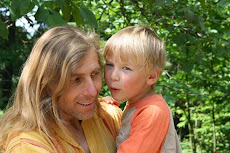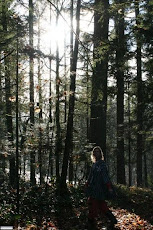
Locavore dilemma: if we only eat produce from within 100 miles, how can we live without syrup on our pancakes?
Solution: make it ourselves.
Yes, you can make syrup from BC's big-leafed maple, so of course we are trying. For the past few days we've started 'sugaring off". Drilling 2-inch holes in our maple trees (affectionately called 'sugarbush' by us harvesters), sticking a tap in and connecting it with a hose to milk jugs. Every 2 or 3 days we'll empty all those jugs into bigger vats for hours and hours of boiling, and once we've collected about 45 litres we'll have enough for 1 litre of syrup. Probably won't get a year's supply of Aunt Jemima from our 20 trees, but what a great experience.
 Our boys and their two friends were out helping yesterday, and at one point all 4 of them were on their hands and knees in the snow, nuzzled up to the trees they had just tapped, hoses in their mouths, sucking sap directly from the trees, blissful as a newborn on the boob. And they've been faithfully checking the jugs each day, excited to be learning, eager for the next discovery - a homeschooler's dream scenario. In one ongoing activity they have learned and participated in:
Our boys and their two friends were out helping yesterday, and at one point all 4 of them were on their hands and knees in the snow, nuzzled up to the trees they had just tapped, hoses in their mouths, sucking sap directly from the trees, blissful as a newborn on the boob. And they've been faithfully checking the jugs each day, excited to be learning, eager for the next discovery - a homeschooler's dream scenario. In one ongoing activity they have learned and participated in:
- sterilization of the milk jugs
- printing - labelling the jugs
- power tools - yes, of course they got to use the drill!
- tree identification - no use tapping the alders
- weather systems - syrup runs best on a low pressure day following 2 high pressure days
- math - average 2-4 litres of sap per day for a month or two, divided by 45 litres of sap per litre of syrup, equals a conservative estimate of one litre of syrup per tree per year
- business - how can we produce enough for sale, where will we market, profit margin...
- nutrition, cooking applications
- exercise, fresh air
- connection to and respect for nature
Not only can we make syrup, but the sap ("maple water") itself is sweet enough to be a substitute for water in many recipes. It helps bread rise better, and tomorrow I'll use it to make a slightly sweet, slightly maple-tasting rice. Plus it's nutritious, containing minerals including calcium, potassium, manganese, magnesium, phosphorus and iron, and vitamins B2, B5, B6, niacin, biotin, folic acid and trace amounts of amino acids.
11 months ago we made our first exploratory visit to Duncan, and attended the first-ever maple syrup festival. Now we're fast becoming those strange sap-tapping people we talked to last year, planning to volunteer, and have already started explaining the process to many friends and a few fascinated Rona employees (as we purchased the drill bit and hosing). The gap between ignorance and perceived expertise can be frighteningly small - as small as a beautiful day in the snow with a drill and some eager kids.







That is absolutely, positively, the coolest thing EVER!!
ReplyDeleteHi Rick,
ReplyDeleteFound your site while searching for info on tapping island big lead maples. I want to do what you're doing! :)
I am up in Qualicum, have access to a buckerfields and rona/home depot. I was just wondering what was in your equipment list that I am going to need.
What sort of tap fitting do you use for a spout? Are you just running the hose off that and into a jug?
I have about 3 acres here with plenty of maples, I know I am a little late this year but I want to get setup anyways.
If you wouldn't mind emailing me the list of supplies to pickup that would be greatly appreciated. carlsor@telus.net
Thanks Again
Carl S.